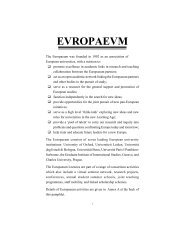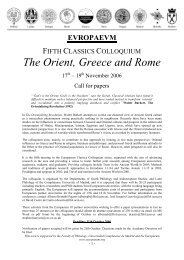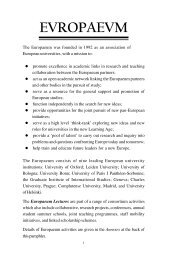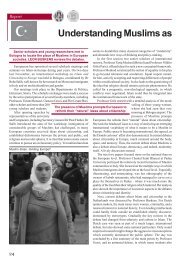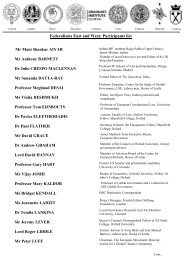Authors Iain Begg | Gabriel Glöckler | Anke Hassel ... - The Europaeum
Authors Iain Begg | Gabriel Glöckler | Anke Hassel ... - The Europaeum
Authors Iain Begg | Gabriel Glöckler | Anke Hassel ... - The Europaeum
Create successful ePaper yourself
Turn your PDF publications into a flip-book with our unique Google optimized e-Paper software.
importantly, the “lead supervisor” regime opens the possibility for<br />
different regulatory practices across jurisdictions, violating the principle<br />
of competitive neutrality unless some central control is established. Thus<br />
the “college” solution is inadequate.<br />
A European System of Financial Supervision (ESFS)<br />
Regulatory fragmentation can be feasibly addressed by a gradual but<br />
speedy transition to a European System of Financial Supervision (ESFS),<br />
parallel to the European System of Central Banks (ESCB). Both the Turner<br />
Review 14 and the de Larosière Group 15 agree on the need to replace the<br />
Level 3 Lamfalussy committees with a new EU independent regulatory<br />
institution. <strong>The</strong> primary responsibility for supervision of individual firms<br />
would continue to remain at the national level.<br />
Under de Larosière, the ESFS would transform and upgrade the Level 3<br />
Lamfalussy committees into three new independent European Authorities<br />
(for Banking, Securities and Insurance respectively), which would be<br />
granted legal powers on the adoption of binding supervisory standards. 16<br />
After a 2-year transitional period, in which colleges of supervisors would<br />
be set up under ESFS for all major cross-border institutions, the ESFS<br />
would begin to function as a fully fledged integrated independent EU<br />
institution, comprising the three authorities. In late September 2009, the<br />
Commission finally adopted draft legislation incorporating the de<br />
Larosière recommendations; it establishes a European Banking Authority,<br />
a European Insurance and Occupational Pensions Authority, and a<br />
European Securities and Markets Authority.<br />
<strong>The</strong> boards of the latter would consist of the chairs of the national<br />
supervisory authorities. <strong>The</strong> three European Authorities would be<br />
equipped with their own autonomous budget. <strong>The</strong>ir chairpersons would<br />
be appointed for an eight-year term, approved by the Commission, the<br />
European Parliament and the Council, and accountable to the EP. <strong>The</strong>ir<br />
competences should include legally binding supervisory standards and<br />
mediation between national supervisors, coordination and oversight of<br />
colleges of supervisors, licensing and supervision of specific EU-wide<br />
institutions such as credit rating agencies, binding cooperation with the<br />
ESRC to ensure adequate macro-prudential supervision, and a coordinating<br />
role in crises.<br />
<strong>The</strong> ESFS should enjoy institutional guarantees of operational<br />
independence vis-à-vis governments, regulators, and other EU institutions,<br />
thus retaining final authority for interpreting and implementing EU<br />
Chapter 2 – George Pagoulatos 37




